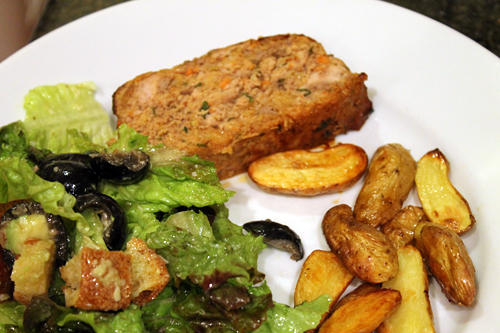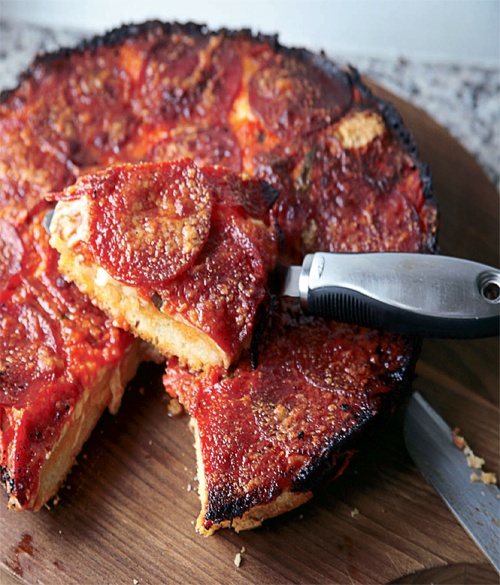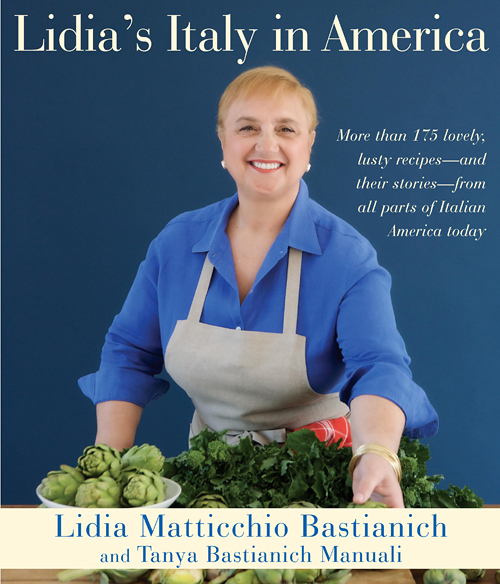Ms. Bastianich’s new book “Lidia’s Italy in America,” which she wrote with her daughter Tanya Bastianich Manuali, is no different. The focus here is the unique ways Italian American immigrants interpreted dishes from their homeland throughout the United States. The book is broken down into the standard sections of antipasti, zuppe, pasta, etc., but within are pages that highlight specific specialties from different areas along with descriptions of the Italian American neighborhoods that created them. So in Poultry we find a vignette about Federal Hill in Providence Rhode Island but soon after follows a recipe for Roberto’s Chicken Piccante from a chef on Arthur Avenue in the Bronx (a neighborhood dear to my heart as it’s where my father grew up). The gamut of Italian American cooking is covered with descriptions of the people who make these neighborhoods distinct and some history as well.
Although I’ve never met her, Ms. Bastianich’s is sort of like my TV culinary mother. Sweet and nurturing while also firm with her advice and directions, I trust her to help me navigate the path of Italian cookery. I will admit that I have occasionally been disappointed, as I was with the deep dish pizza in this book which was more bread than pizza. I can’t really complain, however, as the recipe says “it is a cross between focaccia and a pizza," so she warned me. My suggestion if you make it is to cut the dough in half and add more filling to the top, but remember I’m a Neapolitan-American raised on thin crusts so I’m a bit biased. More often than not, however, I have been quite happy with the results. The baked Rollatini of Sole offered a delightfully lemony take on fish cooked with breadcrumbs and the Italian American Meatloaf is, without a doubt, the best meatloaf I have ever made. My kids and husband raved about it and we all had seconds. Note, however, that the recipe is so big it makes either one incredibly large loaf, or, if you’re like me, one for your own family and one to share with the mom who took your kids for the afternoon.
"Lidia’s Italy in America" has that type of easy cookbook style I like best when reading recipes I will actually use. The recipes are laid out clearly and are easy to follow. I also enjoyed her stories on American neighborhoods and their Italian citizens. My only criticism is that there are hardly any pictures of food (most are of the people in the neighborhoods she visited). I love recipe photos in cookbooks because it’s reassuring to know what dishes are supposed to look like when you cook them and I felt this book could have used a few more. But that is a minor criticism. As she’s done many times before, Lidia Bastianich has provided a solid compilation of Italian American recipes, this time with an emphasis on those that truly reflect the diverse and eclectic nature of the many types of Italian neighborhoods there are in America. So if you’re in the mood for authentic Italian American recipes from the embodiment of Italian mama-ness, pick up a copy of "Lidia’s Italy in America."

Italian American Meatloaf, salad and roasted potatoes. Photo by Denise Santoro Lincoln.
Recipe: Italian American Meatloaf (Polpettone)
One would think that meatloaf is very American, but its origins are actually in a German colonial dish of minced pork mixed with cornmeal. Italians serve it a lot as well, and in this rendition the cultures blend deliciously with the addition of a pestata, a paste of carrots, celery, and onions. Not only does the meatloaf taste delicious, but it is foolproof, moist every time. The leftovers reheat as if just cooked, and Italians love to serve it with roasted potato wedges.
Serves 10 or more
2 cups cubes of country bread with crust
1 cup milk
2 medium carrots, cut into chunks
2 medium stalks celery, cut into chunks
1 medium onion, cut into chunks
1 1/2 pounds ground beef
1 1/2 pounds ground pork
1 bunch scallions, trimmed and chopped
1 cup grated Parmigiano-Reggiano or Grana Padano
1 cup marinara sauce or puréed canned tomatoes
1/2 cup chopped fresh Italian parsley
2 teaspoons kosher salt
1 teaspoon dried oregano
2 tablespoons extra-virgin olive oil
Preheat the oven to 375 degrees F.
Put the bread cubes in a medium bowl, and pour the milk over them. Let the bread soak until it is soft. Meanwhile, combine the carrots, celery, and onion in a food processor, and pulse to make a fine-textured paste or pestata.
When the bread is soft, squeeze out the excess milk and put the bread in a large mixing bowl. Mix the pestata, ground meats, scallions, grated cheese, marinara sauce, parsley,salt, and oregano with the bread, using your hands to distribute all of the ingredients evenly. Oil a 10-by-15-inch Pyrex or ceramic baking dish with the olive oil. Form the meat mixture into a loaf in the oiled pan.
Place in the oven, and bake until browned and cooked through (the center of the meatloaf should read 165 degrees F on an instant-read thermometer), about 1 hour and 15 minutes. Let cool for 10 minutes before slicing.

Chicago Deep-Dish Pizza. Photo: Lidia Matticchio Bastianich.
Recipe: Chicago Deep-Dish Pizza (Pizza Alta di Chicago)
One could call this dish pizza bread, and it is a cross between a focaccia and a pizza. In Sicily, they make a high pizza called sfincione, topped with tomatoes, oregano, and a few anchovies. It is sold in warm squares as street food from a cart. The idea for deep- dish pizza came from the early Sicilian immigrants that settled in Chicago, although the excessive toppings are not something one would find in Sicily.
Makes 1 pizza
FOR THE DOUGH
1/2 teaspoon sugar
1 packet instant dry yeast (2 1/4 teaspoons)
3 1/2 cups all-purpose flour, plus more for kneading the dough
1/2 cup fine cornmeal
1/2 teaspoon kosher salt
1/4 cup extra-virgin olive oil, plus more for bowl and pan
FOR THE TOPPING
4 ounces provolone, sliced
4 ounces mozzarella, sliced
1 to 1 1/2 cups marinara sauce
2 ounces pepperoni, sliced
1/2 cup grated Grana Padano or Parmigiano-Reggiano
1/2 teaspoon dried oregano
Pour 1 cup plus 3 tablespoons warm (90 to 110 degrees F) water into a bowl, then stir in the sugar and yeast. Let sit until the yeast begins to bubble, about 5 minutes.
In an electric mixer fitted with the paddle attachment, mix the flour, cornmeal, and salt on low to combine. Pour in the yeast mixture and the olive oil to combine while still mixing. Once the dough comes together, switch to the dough hook, and knead on medium-high speed to make a smooth dough, about 2 to 3 minutes. Add a little more water or fl our as needed to make a soft dough. Put the dough in an oiled bowl, cover, and let rise until doubled in size, from 1 1/4 to 1 1/2 hours.
Preheat oven to 400 degrees F. Punch down the dough, and press it into a 14-x-10-inch oiled baking pan or an oiled 12-inch cast-iron skillet, gently pressing the dough up the sides to make a shell. Fill the shell with an even layer of the provolone and mozzarella, then spread the sauce to cover the cheese completely. Top with the pepperoni, and sprinkle with the grated cheese and oregano. Cover with foil, and bake 45 minutes. Then uncover, and bake until the crust is deep golden brown and the pizza is bubbly, about 20 minutes more. Let sit about 5 to 10 minutes before cutting into wedges and serving.


